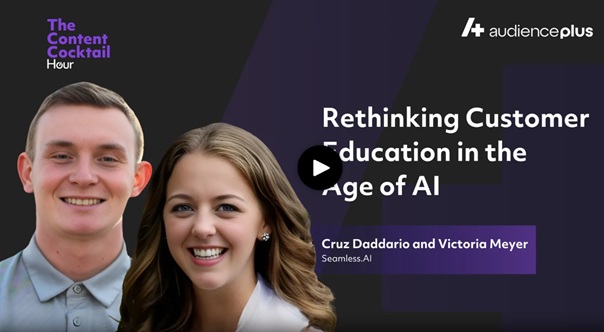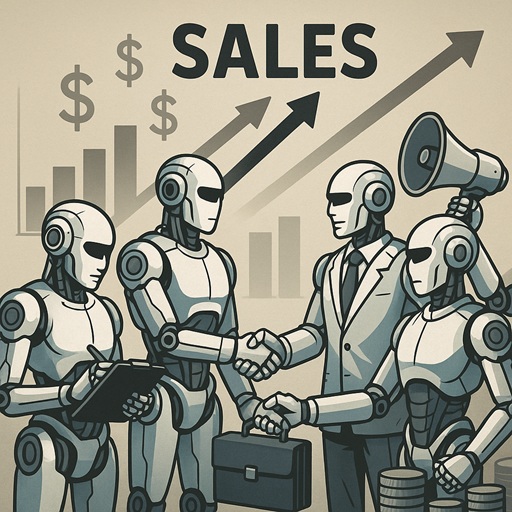When you think of computer SaaS companies, you might think of the notorious big tech FAANG companies: Facebook (Meta), Amazon, Apple, Netflix, and Alphabet (Google).
For decades, these companies have reigned supreme in the computer SaaS industry with rising stock prices and a tight grip on the tech market. But is FAANG still the “king of the jungle” in the SaaS world?
In 2024, FAANG computer SaaS companies aren’t the only ones on top. Smaller, more niche players have made a name for themselves in the market in recent years and rose to the top–threatening the monopoly-like control that Big Tech previously held.
Nowadays, there are companies like OpenAI, Bing, and other new AI computer SaaS companies that are big enough to make Big Tech shake in their boots. Factor in the ups and downs of Big Tech’s profitability in the last few years and you’ll understand the unpredictable nature of the tech industry.
So what does this mean for others in the computer SaaS industry?
With new players in the SaaS market popping up everyday, this industry is ripe with opportunity to expand the target addressable market (TAM) for those looking to prospect these types of customers.
Here’s how to take advantage of this high growth market right now in sales:
- Upskill your team and offerings to accommodate high growth areas like generative AI, cybersecurity, and cloud solutions.
- Be relentlessly personable with your branding.
- Explore flexible pricing options for new customers (not just freemium).
- Try scaled CX, not just PLG or SLG.
- Take an ABM approach to target more high ticket accounts.
- Focus on vertical markets that rely on SaaS solutions.
Related: What is SaaS Sales?
📕 Psst…Ready to dive into computer SaaS sales prospecting? Explore our comprehensive directory of the top computer SaaS companies in the U.S., with all the contact information you need to start building your prospecting lists.
1. Target high growth areas: Generative AI, cybersecurity, and cloud solutions.
Whether you’re targeting customers in the computer SaaS industry that are creating new solutions or you’re targeting customers who are looking for new solutions that incorporate these high growth areas, there’s no doubt that these areas of growth in the B2B SaaS industry will continue to be important.
In fact, AI, cybersecurity, and cloud solutions are becoming almost household concepts in the computer SaaS industry.
It’s expected in 2024 that big tech companies will continue to invest more in these high growth areas, whether it be creating new solutions for it or investing in other companies that provide these solutions.
Whether you’re for or against AI, the truth of the matter is that companies who are well-versed in AI, cybersecurity, and cloud have a competitive edge over their counterparts who have yet to dip their toes in the water for these high growth areas.
Here are some questions to ask yourself and your team in regards to this current computer SaaS trend:
- Is your team well-informed and do they have enough skills to target more customers or accounts that want to expand in these high growth areas? What would upskilling your team look like?
- Are you able to mold your offerings, products, and solutions to address this demand in the market? If not, how can you provide a competitive value proposition against competing players in the market who do offer more value or services for generative AI, cybersecurity, or cloud?
- How do our current customers feel about these high growth areas? If you decide to expand your offerings to meet this new demand, will your current customers still find value or renew with your company?
There are no right or wrong answers when it comes to evaluating how these new demands for AI, cybersecurity, or cloud will fit into your offerings. What we do know, however, is that these demands aren’t going anywhere and it’s up to your organization to decide whether they will bend to these changes or go against the grain.
2. Market the problem you solve, not your product.
In an industry saturated with the ‘newest, greatest, and most innovative’ products, how do you make people care about what you bring to the table?
In the words of Mark Jung, Founder of Authority:
“No one cares about your features or tech. Your customers have 99 problems. Your product ain't one...Don’t just announce your feature(s). Tell the problem stories it solves for your audience.”
Your customers have so many problems on their plate. It wouldn’t make sense for them to jump at every new SaaS product announcement or feature release just for the sake of novelty.
Your customers want to know what you can do for them–more specifically, what can you do to solve their most pressing problems?
Your odds of hitting the jackpot with your dream customers in the computer SaaS industry is like casting a fishnet into an area of the ocean with thousands of schools of fish, but at the same time with thousands of other fishermen.
There’s plenty of fish to catch, but you need to get a little creative with your fishing techniques or your bait to make sure you’re capturing the entire pool of fish you wanted.
It’s the same with the SaaS market: you’ll never run out of customers, but competition is always growing.
That’s where personal branding comes in. In the computer SaaS industry, you have to be relentlessly personable. Your brand needs a heartbeat, not another sign for your customers to spend their money.
In other words, don’t be a walking advertisement for a typical sales-hungry person looking to get your next customer. Instead, be the type of salesperson that other people want to pursue themselves.
This can happen in a number of ways–your product or service needs to be so impressive that it doesn’t need much of a pitch, your company’s online brand presence is strong and leaves a great impression, and you know how to approach people from a person to person perspective, not a B2B or B2C perspective.
In B2B sales, you want to be a reliable, trustworthy advisor who customers can partner with to produce massive results–not someone who just wants a prospect’s company credit card billing information.
People can smell inauthenticity from a mile away, and it’s becoming increasingly more difficult to connect with real people on a human level in today’s age of endless digital outreach. People are tired of the BS; they want something real that they can relate to and doesn’t sugarcoat things.
Here’s what you can do to become “relentlessly personable” in the computer SaaS industry:
- Don’t sell a product, sell an experience.
- Position yourself as a trusted advisor helping others diagnose their problems, figure out a tailored solution for their unique needs, and coaching them through the process. You’re not a car salesman looking to do a ‘one-and-done’ type deal where you sell something to them once and then move on to a new prospect.
- Make people remember you. Whether it’s through an email, phone call, or even a marketing campaign that your company does, you need to leave a lasting, positive impression that will imprint you as a person or brand in the customers’ minds.
3. Explore flexible pricing options for new customers (beyond freemium).
Pricing structure can be a huge pivotal point for some companies in the computer SaaS industry, either good or bad.
You might have heard of companies going the “freemium” route, or offering a free trial of their premium products for customers to try for free and get them more interested in higher ticket plans. Freemium is also a way to get more brand awareness and seen as a shortcut to quickly growing your user base.
Nowadays, SaaS companies are moving away from the freemium model. According to UserGuiding, less than a fifth of SaaS companies currently offer a freemium option.
Here’s why freemium is losing traction in the computer SaaS world.
Freemiums work great in B2C markets, but it’s difficult to monetize in the B2B world with more narrow TAMs, niche or complex products, and low conversion rates.
Even if SaaS companies successfully grow their user base 10x or 100x through freemium, it’s pretty taxing to support such a large base of free users who may or may not convert to paying customers. The cost of supporting this and maintaining it just isn’t worth it for a lot of big enterprise computer SaaS companies.
Instead, here’s what customers really look for nowadays:
- Transparent pricing with no hidden fees
- The option to add on more features
- Products or solutions that will bend as their needs over time (not software lock-in)
- Actual value from your product or service that doesn’t make them think twice about the price tag.
Rather than riding the freemium bandwagon, consider taking a more value-based pricing model. A value-based pricing model relies on the customers’ or users’ perceived value of the product or service. In other words, a product or service costs as much as people are willing to pay for it.
Here’s why value-based pricing works:
- Potential for higher markups for highly esteemed products or services
- Increases your perceived value through intangible benefits
- Makes it easier to differentiate yourself in a crowded market
Of course, no pricing model is perfect. While there are many pros to adopting value-based pricing, there are a few drawbacks to consider: the price is difficult to set, it’s not always stable, and the markups might not be high.
This capitalist, laissez-faire approach to pricing in the computer SaaS industry may not be the answer for every company, but it’s a step in a new direction that shows users that their money is being well-spent.
The takeaway here is to explore more flexible pricing options depending on your unique user base.
4. Grow your user base with customer education, not just PLG or SLG.
Ah, here’s the good ole’ debate in the B2B SaaS world about how organizations should structure their go-to-market strategies: product-led growth or sales-led growth?
To be honest, the debate between PLG vs SLG is like talking about which comic universe is better: Marvel vs DC.
We won’t get into the specifics of the Marvel universe vs DC (we’re not here to start a riot), but what we do know is that both comics share the same goal of generating big-screen fame and viral viewership.
It’s the same for PLG vs SLG–we’re all just trying to find the best way to grow and scale computer SaaS companies.
One structure might work better than the other for one computer SaaS company while it might be the opposite for another, but the point is stop getting caught up in the semantics of “what’s better” or “what’s right” and start focusing more on what works for your unique customers and company.
We’ve talked about this topic before (see “Go-to-market strategy examples” in our GTM Strategy Guide), but we’ll touch on it again for the sake of reinforcing the takeaway: finding a happy middle ground between PLG and SLG, coined as “Scaled CX” by Miro.
Scaled CX is the best of both PLG and SLG worlds, except the main difference is that it focuses on the customers’ enablement and education.
Nowadays, computer SaaS companies are putting the focus back on the customer. This looks like:
- Building their customer education and enablement resources
- Creating customer support centers and Help articles
- Unifying customer education, content production, and scaled/digital customer success into a single team
The bottom line here is to generate user base growth by optimizing every step of the customer journey for every persona. Rather than operating from organizational silos and prioritizing sales over product, or vice versa, reframe your SaaS strategy to put the focus back on the customer.
5. Take an ABM approach to target more high ticket accounts.
ABM, or account based marketing, is a business strategy that focuses on high-value accounts in a market or business.
Rather than zeroing in on an individual user or customer, the goal of ABM is to target high-priority organizations or businesses in a sales territory as a whole. Talk about efficiency, right?
When you’re scaling your sales or marketing efforts in the B2B SaaS industry, ABM helps to weed out less valuable companies or less-qualified leads.
Here’s how to take the ABM approach to your SaaS sales strategy (at a high-level view):
- Identify companies you want to work with. Live search engines like Seamless.AI streamlines this part of the equation by pulling company and B2B contact info in seconds.
- Rank your prospects in your target accounts. Narrow your focus down to relevant decision-makers in each company.
- Get your marketing and sales teams aligned on nurturing your high-ranking contacts.
- Create hyper-personalized content to attract these high-priority prospects.
- Measure the quality of your lead engagement with metrics like click through rates, conversion rates, annual contract values, and more. The focus is not how many leads you have; the focus is on the quality of your lead engagement.
6. Focus on vertical markets that rely on SaaS solutions.
The beauty of the B2B tech industry is that there will always be a demand for SaaS solutions.
Vertical markets or industries that constantly need the latest digital innovations or technology solutions are your bread and butter customers.
Some examples of industries that will always need SaaS solutions are:
- Healthcare (electronic health records, telemedicine, data security…)
- Finance (Data privacy and security, financial record management, risk management, fraud detection…)
- Education (learning management systems, virtual learning, administrative management…)
- Manufacturing (Supply chain management, enterprise resource planning (ERP), quality control, maintenance management…)
While targeting small, more niche industries is always an option, companies in the computer SaaS industry are motivated by the bigger players in the market.
The key here is to not ignore smaller industries or verticals, but to create tailored solutions for each of your target personas needs, big or small. If your SaaS solution can’t support smaller industries, how can you expect to scale to large enterprise organizations?
If you’re just starting out, focus on locking down your niche industries to get your foot in the door. Successfully locking in these verticals is the stepping stone to scaling to more lucrative industries.
Prioritizing high-value industries is all about being strategic about your SaaS business’s growth potential in the long-run. Weigh out your options for strong verticals to target in terms of scalability, revenue potential, customer base size, and investment appeal.
The bottom line: Consider how your SaaS solution can help other industries evolve, big or small. Evaluate your resources, goals for growth, and the market dynamics to identify untapped areas in the market that have high growth potential.
The rules of computer SaaS growth in a nutshell
The tech world is fluid, it’s an industry that ebbs and flows. The one constant you can focus on in this industry is change.
Keeping a pulse on the constant change in SaaS markets can feel overwhelming, but the fun of doing sales here is learning how to roll with the punches.
Our suggestion? Get familiar with your target customers, find ways to optimize every point of the customer journey, and don’t get stuck in a binary mindset of choosing one sales strategy over another. Adopt a more flexible approach to your computer SaaS sales strategy by modifying, tweaking, and evolving with the market.
Evolving with the market starts with knowing your target market. With Seamless.AI, you can find your dream customers in real-time with our live search engine and get familiar with your target market through accurate B2B contact data. It’s free to get started, and we’ll give you 50 free credits to start.














